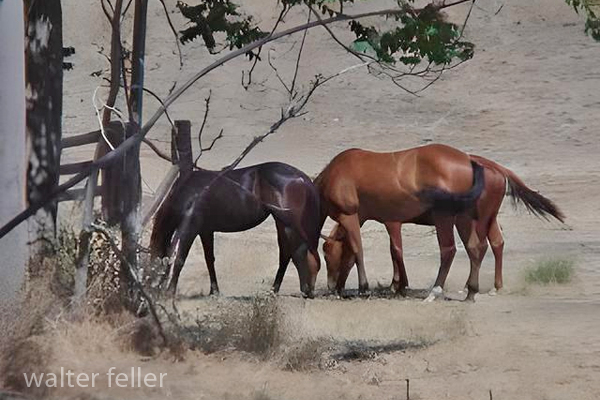
The transition from horse-drawn vehicles to automobiles in the Mojave Desert, much like in other parts of the United States and the world, marked a significant shift in transportation, lifestyle, and economic activities. This changeover happened primarily in the early 20th century, driven by the broader adoption of the automobile as a more efficient and reliable means of transportation. Here are several key aspects of this transition:
1. Impact on Transportation
- Speed and Efficiency: Automobiles offered much faster and more reliable transportation than horse-drawn vehicles. This efficiency was crucial in the vast and challenging terrain of the Mojave Desert, where distances between towns and water sources can be significant.
- Infrastructure Development: The rise of automobiles necessitated the development of roads suitable for vehicle traffic. In the Mojave Desert, this meant creating and improving roads that could withstand the harsh desert conditions.
2. Economic Changes
- Decline of Traditional Industries: The demand for services related to horse-drawn transportation, such as blacksmiths and farriers, saw a decline as automobiles became more prevalent.
- New Opportunities: At the same time, new economic opportunities arose, including those related to automobile maintenance, fuel stations, and roadside accommodations for travelers.
3. Social and Cultural Impact
- Accessibility: Automobiles made the Mojave Desert more accessible for residents and tourists. This accessibility profoundly impacted the social fabric and cultural exchanges within the region.
- Lifestyle Changes: The ease of travel allowed for greater mobility, changing where people lived, worked, and how they spent their leisure time.
4. Environmental Considerations
- Impact on the Landscape: Road construction and increased vehicle traffic had environmental impacts on the desert landscape, affecting native plant and animal species.
- Resource Consumption: Automobiles also changed resource consumption, including increased demand for petroleum and water for cooling engines, which must be considered in the desert’s scarce water supply context.
5. Historical Context
- Early Adoption and Challenges: The adoption of automobiles in remote areas like the Mojave Desert came with challenges, including limited access to fuel and mechanical services. Early automobiles were not as reliable as they are today, and breakdowns in the desert could be life-threatening.
- Route 66 and Other Roads: The construction of Route 66, which passes through the Mojave Desert, was a significant factor in the desert’s automotive history. It facilitated increased travel and commerce, symbolizing the American West’s automotive transition.
This transition was part of the broader technological and societal shifts occurring in the early 20th century, reflecting the changing American landscape and the Mojave Desert’s unique challenges and opportunities.
—